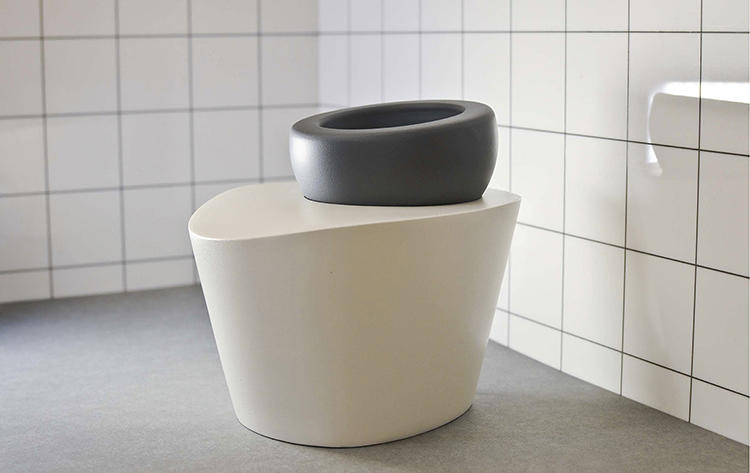Ergonomic Toilet Bowl Aims to Correct Your Posture
Dec 04, 2013 19:55

Three industrial design graduates from Central Saint Martins reimagined the standard toilet for a competition launched by a UK company. Sam Sheard, Pierre Papet, and Victor Johansson's winning design is the ergonomically-correct-for-pooping Wellbeing Toilet.
When you use regular toilets, you perch upright at a 90-degree angle, but that's not ideal for health, according to the designers. “The angle increases the risk of things like colon diseases and bowel-related illnesses,” explains Sam Sheard. “Ideally you should squat, but there are negative social connotations because we’re used to sitting down on a toilet, whereas in other cultures, it’s fine.”
Instead of designing a true squat toilet, the team created a hybrid: you step up on the toilet, and as you bring your legs up you lean into the correct angle; similar to hybrids such as the Anglo-Indian toilet still used in India, which allow for both sitting and squatting, depending on your preference.

The Wellbeing Toilet aims to change habits and encourage users to have better posture. It also analyzes your pee. “It’s what you’d get if you go to the doctor now, and you need to be checked for diabetes or kidney disease and they check things like the phosphates in the urine,” Sheard says. “In the U.K., many people with diabetes are diagnosed late, which adds billions of pounds a year in health costs.” By checking up on users, the toilet aims to help catch diseases earlier.
It could also make home pregnancy tests much easier. “The industry that’s connected with pregnancy tests has huge costs both financially and environmentally--with resources, manufacturing, plastic packaging, and distribution--if you encompass that within something like a toilet, you can have an impact,” Sheard says.
The toilet could eventually analyze nutritional deficiencies. All of the health feedback could be sent to a smartphone through an app, or possibly be delivered through more low-tech notifications, like a change in the color of the water in the toilet bowl. But for now, the design is still a concept - the team had only 15 days to work on the project. “People may see it and think, ‘That’s not what a toilet looks like,’” says Sheard. “We talked about putting it into a health environment--like a spa or a gym--so it fits in with other health equipment.”








































































